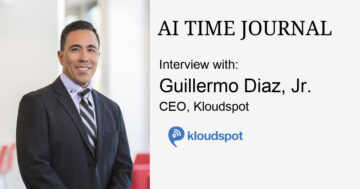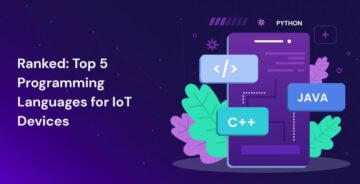
The similitude between the cloud’s most pronounced enterprise advantages and those of blockchain is too great to ignore. Both are credible means of storing data. They also excel at exchanging data remotely, facilitating multi-party collaborations, and doing so securely.
So why are cloud adoption rates soaring while enterprise adoption rates of blockchain remain modest?
According to Vendia CEO Tim Wagner, it’s because of the latter’s delicate dichotomy for enterprise use cases in which “if you ask about awareness, intent to prototype and to deploy to production, blockchain looks like one of the hottest technologies out there. But it’s been stymied a little bit by some of the challenges and the practical realities of that technology.” Specifically, those challenges include:
- Throughput: The consensus-based approach of blockchain has the potential for significant latency, especially if participants have any nagging issues with memory, compute, or storage on their machines.
- Enterprise ready: Companies using private or permissioned chains like Hyperledger Fabric have issues in which “it’s not necessarily a very cloud or enterprise friendly technology; it doesn’t embrace semi-structured and file data, which enterprises have in abundance,” Wagner revealed.
- Scalability: Both of the foregoing issues can hamper the scalability of blockchain initiatives, particularly for popular deployments like secure document exchanges, real-time logistics and supply chain updates, and single sources of truth between multiple participants.
However, deploying blockchain in the cloud—particularly with serverless computing architecture—immediately redresses each of these points of concern, making blockchain as dependable and enterprise worthy as the cloud itself is.
Cloud Blockchain
Fortifying blockchain with cloud approaches like serverless computing renders this technology instantly enterprise ready. It effectively represents “an evolved notion of distributed ledgers and blockchains because it is what companies need: the ability to embrace multiple data types, the built-in fault tolerance, the friendliness to existing enterprise systems and regimes,” Wagner confirmed. The fault tolerance of this approach is commendable from multiple perspectives, including the cloud’s renown for high availability and failovers to avoid downtime.
Moreover, if there’s a surge in traffic or if even a single participant is experiencing a lull in memory, compute, or storage, organizations can access additional resources on demand (especially with serverless computing). These factors culminate in an ability to support ongoing low latent data exchanges—like tracking parts as they move through supply chains, enabling companies to quickly determine losses or points of damage while assessing blame in real-time. “Having the scalability, the fault tolerance, and the low latency is what enables enterprises to build actual working applications on top of what is fundamentally a distributed ledger technology,” Wagner posited.
One Source of Truth
The benefits to deploying blockchain in the cloud are almost countless. The cloud cost model—which in public clouds is a nominal operating expense with a pay-per-use paradigm versus an upfront capital expense for certain private clouds and other blockchain implementations—is certain to resonate with upper level executives. In this respect, blockchain use cases result in “much, much lower infrastructure costs and a single source of truth,” Wagner commented. “There’s a huge amount of time and money and IT efficiency that you can collect industry wide by being able to not just digitize an individual company’s activities, but those collective activities across all of those different companies [on a distributed ledger].”
Furthermore, the unalterable nature of the data stored in this distributed ledger provides the proverbial single source of truth that’s accessed across parties for any type of data exchanges, not just those involving cryptocurrencies. It’s easily auditable for dispute reconciliation or regulatory compliance needs while working remotely between organizations. According to Wagner: “Blockchain is going to fundamentally change a lot of these industries that today are relying on either manual mechanisms just to handle all of that, or are relying on very expensive, older generation technologies and services… A lot of those industry and tech examples are going to benefit from having that single source of an immutable truth.”
Reciprocal Gains
It’s fairly clear how the cloud and serverless computing significantly enhance enterprise applications of blockchain. They’re an integral aspect of increasing the throughput of transactions, boosting the scale of deployments, and reducing their latency while furnishing fault tolerance—and overall dependability—worthy of supporting the enterprise. In and of itself, however, blockchain doesn’t necessarily fortify cloud deployments, except in instances in which organizations require tamper-proof security, validation, and data lineage in multiparty collaborations, which can involve entities within and between organizations.
The deployment of smart contracts (which is essentially code execution between programs when specified conditions are met) may prove influential for improving the cloud via blockchain, especially for hybrid and multi-cloud options. In this case “that data trigger, that computation that’s associated with the data, is not just in a single person’s database,” Wagner noted. “It has to be managed consistently and triggered and driven consistently across this data that reaches into many different tech stacks across different clouds, across different companies, organizations and departments.”
With such developments, the integration between the cloud and blockchain will become even more granular in the ensuing months.
Image Credits Featured Image: NeedPix

Contributor
Jelani Harper is an editorial consultant servicing the information technology market. He specializes in data-driven applications focused on semantic technologies, data governance, and analytics.
Opinions expressed by contributors are their own. Source: https://www.aitimejournal.com/@jelani.harper/the-next-wave-of-cloud-computing-blockchain
- access
- activities
- Additional
- Adoption
- All
- analytics
- applications
- availability
- Bit
- blockchain
- boosting
- build
- capital
- cases
- ceo
- change
- Cloud
- cloud adoption
- cloud computing
- code
- Companies
- compliance
- Compute
- computing
- consultant
- contracts
- Costs
- cryptocurrencies
- data
- Database
- Demand
- Dispute
- Distributed Ledger
- distributed ledger technology
- distributed ledgers
- downtime
- driven
- Editorial
- efficiency
- Enterprise
- Excel
- Exchanges
- execution
- executives
- fabric
- featured
- Gartner
- governance
- great
- High
- How
- HTTPS
- huge
- Hybrid
- Hyperledger
- Hyperledger Fabric
- image
- Including
- industries
- industry
- information
- information technology
- Infrastructure
- integral
- integration
- intent
- issues
- IT
- Ledger
- Level
- logistics
- Machines
- Making
- Market
- money
- months
- move
- Notion
- operating
- Options
- Other
- paradigm
- perspectives
- Popular
- private
- Production
- Programs
- public
- Rates
- real-time
- realities
- Regulatory Compliance
- Resources
- Scalability
- Scale
- security
- Serverless
- smart
- Smart Contracts
- So
- storage
- supply
- supply chain
- Supply chains
- support
- surge
- Systems
- tech
- Technologies
- Technology
- time
- tolerance
- top
- Tracking
- traffic
- Transactions
- Updates
- Versus
- Wave
- What is
- within
- working remotely








